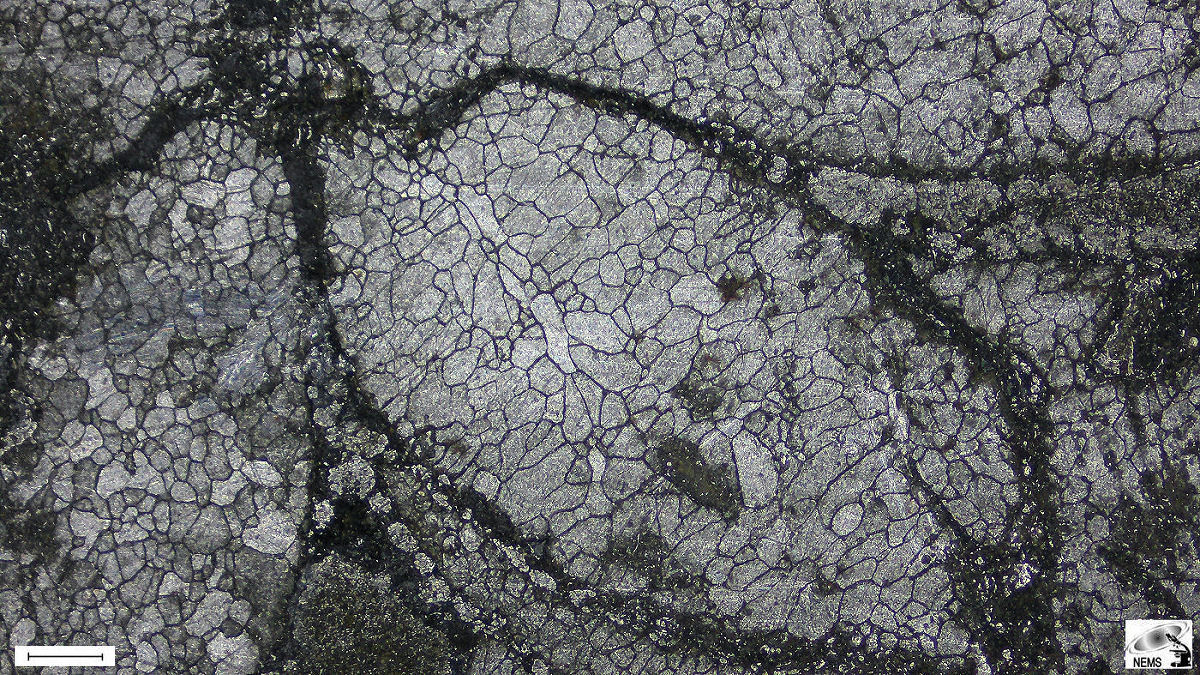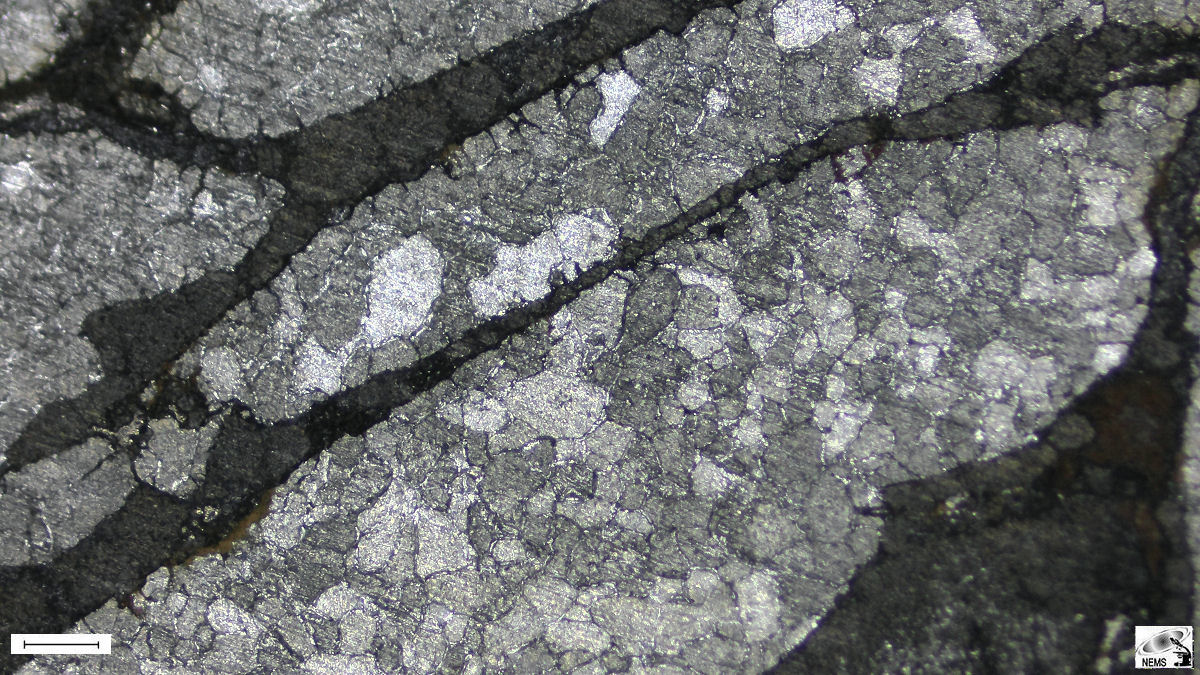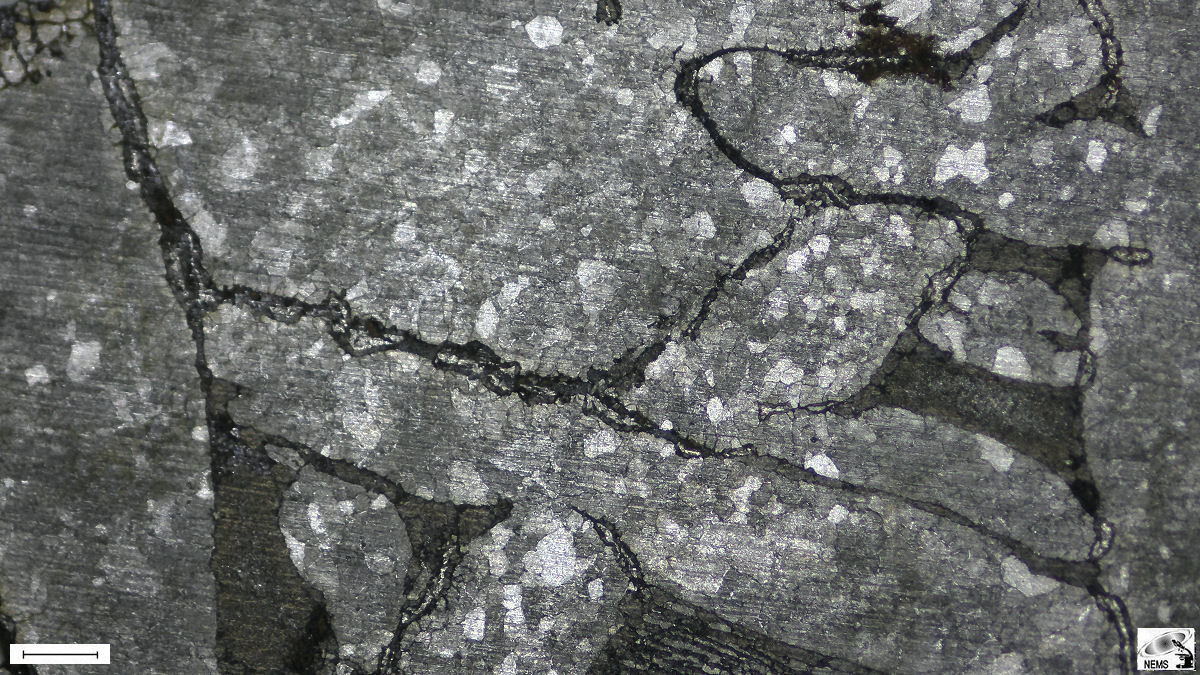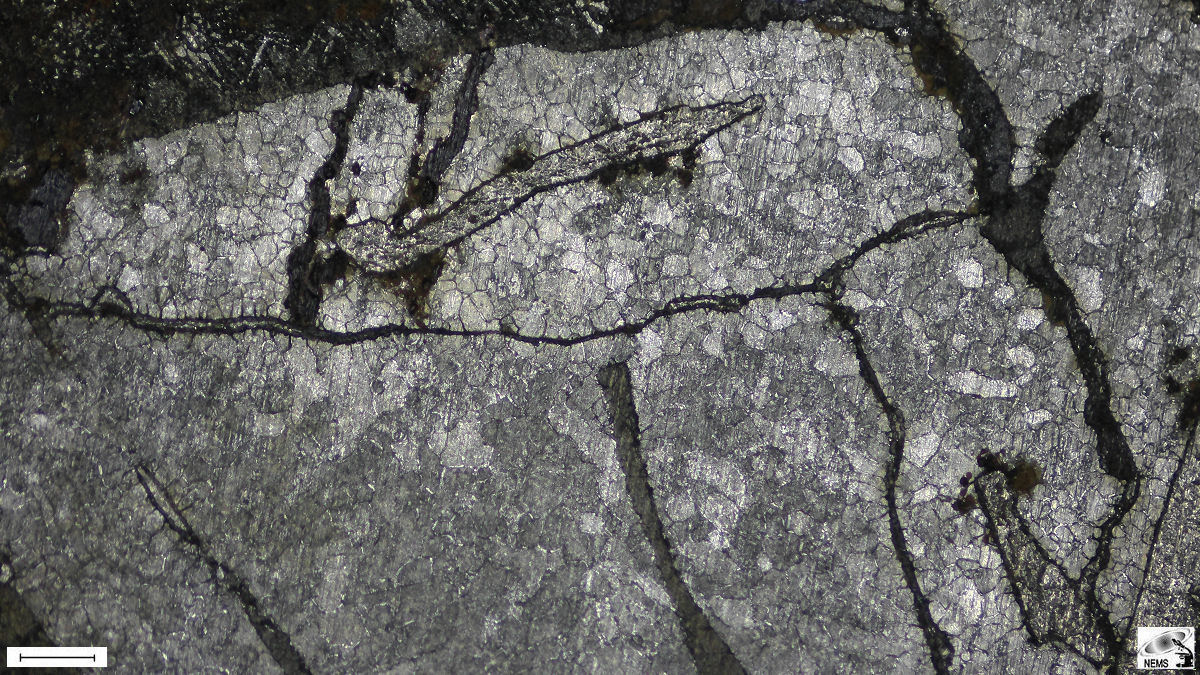Primary and Secondary
Structures - Meteorites |
Recrystallized Kamacite |
| Listing of Structures |
| Back...Next |
| Meteorite - Seneca Falls, IAB Iron. |

| Figure 1. Scale bar 200
µm. Meteorite - Seneca Falls Classification - Iron, IAB-Mg, 8.2% Ni, 0.3 P Recrystallized kamacite - Secondary. |
| Seneca Falls is a medium
octahedrite, IAB-Mg, with recrystallized primary structures. Originally, its
kamacite formed as a primary phase, but was transformed into a secondary
structure through recrystallization. The meteorite underwent significant shock events, resulting in deformation and fracturing throughout its structure. Subsequent to these impacts, it experienced reheating. This thermal metamorphism drove the recrystallization of both kamacite and taenite. In detail, the kamacite recrystallized into equiaxial grains ranging from 50 to 250 µm in diameter. Berwerth (1914) analyzed these polyhedral kamacite grains and suggested that Seneca Falls's unusual structure stemmed from artificial reheating. However, Buchwald (1975) later observed that the shock-melted troilite and taenite lamellae are fragmented into segments measuring 50 to 400 µm across, pointing to intense shock-reheating. Based on this evidence, Buchwald concluded that the recrystallization of Seneca Falls resulted from cosmic events rather than artificial processes. Note the recrystallized taenite lamellae, bottom of image. |
 |
| Figure 2. Scale bar 100
µm. |
| Recrystallized kamacite
lamellae, Seneca Falls. |
 |
| Figure 3. Scale bar 300
µm. |
| Recrystallized kamacite
lamellae, Seneca Falls. |
 |
| Figure 4. Scale bar 300
µm. |
| Recrystallized kamacite lamellae, Seneca Falls. |
| Listing of Structures |
| ... |